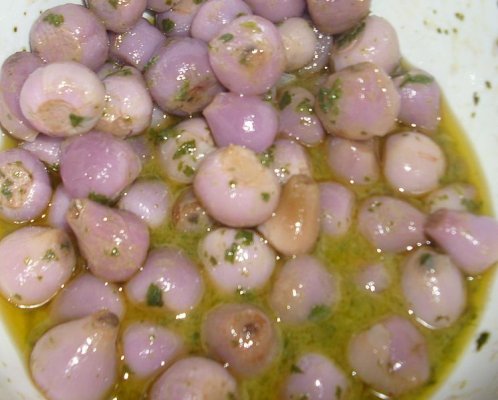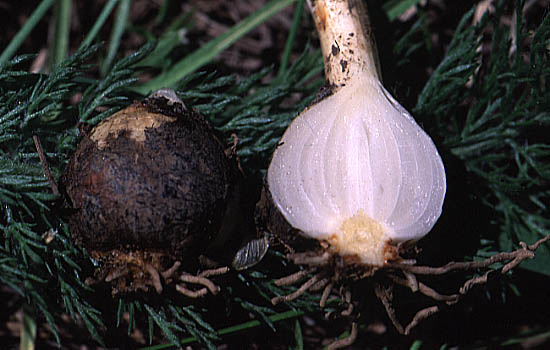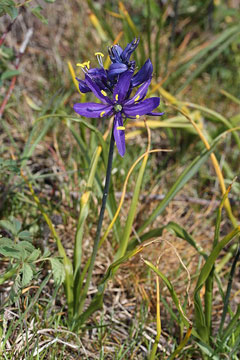Here we go with the
frittata with lampascioni.
Ingredients
300 kg lampascioni
4 eggs
70 g hot salami
2 tablespoons grated pecorino cheese
2 tablespoons olive oil
Wine vinegar
Salt
Black pepper, grounded
The preparation of the bulbs is the same as for the Lampascioni in oil:
Clean the lampascioni, peel them and cut a cross at the bottom after removing the root. Cover them with water in a bowl for a couple of hours; once in a while change the water. Boil them
in water with added salt and vinegar (2 parts vinegar, 1 part water), till they are tender. Drain, dry and let them cool down.
For the frittata:
Sauté the lampascioni in a pan with the some olive oil on low fire, about 10 minutes, crushing them with a wooden spoon. Whisk your eggs with salt, pepper, pecorino and diced salami. Add lampascioni and cook the frittata on both sides in a pan with oil, on medium/high fire.
Here you find some beautiful photographs, which show you how to properly prepare lampascioni (cleaning, cutting etc.) for this frittata:
PomodoroRosso Ricette FRITTATA DI LAMPASCIONI




 .
.


 .
.